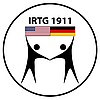A6 (2014 - 2017) – Dissecting the role of IL-17 axis in non-IgE mediated food allergy and obesity-associated liver disease
Food allergies (both IgE-mediated and non IgE-mediated) have become an ever-increasing medical problem. Non-celiac wheat sensitivity (NCWS), which shares high similarities with celiac disease (CD), has been attributed to the group of non-IgE-mediated allergies. Increasing evidence suggests that specific pest resistance molecules in wheat known as a-amylase/trypsin Inhibitors (ATIs) play a major role in the pathogenesis of both diseases. It is suggested that ATIs-mediated allergen-like activation of innate immune receptors polarizes T cell subset differentiation and is responsible for driving NCWS/CD pathology. Notably, NCWS and CD have been suggested to be risk factors for non-alcoholic fatty liver disease (NAFLD), which is characterized as an end-organ sequelae of obesity-driven inflammation. However, despite the commonality, mechanisms regulating NCWS/CD-mediated development and progression of NAFLD are unknown. Recent studies have implicated the IL-17 family of cytokines in regulation of NCWS/CD, obesity and in the development and progression of NAFLD. However, the relevant source(s) of IL-17A and the relevant IL-17RA expressing cell type(s) contributing to such effect remain to be defined. Thus, these findings suggest that augmentation of IL-17 axis expression, in the intestine following exposure to ATI allergens in susceptible individuals suffering from non-IgE mediated food allergy, may represent a shared pathophysiological mechanism in NCWS/CD and NAFLD.
Aims:
- Define the mechanisms of Gliadin/ATIs induced IL-17A expression.
- Determine the role of IL-17 axis on Gliadin/ATI dependent model of non-celiac wheat sensitivity.
- Define the impact of wheat sensitivity-driven intestinal IL-17A production on development of and progression of non-alcoholic fatty liver disease (NAFLD).






